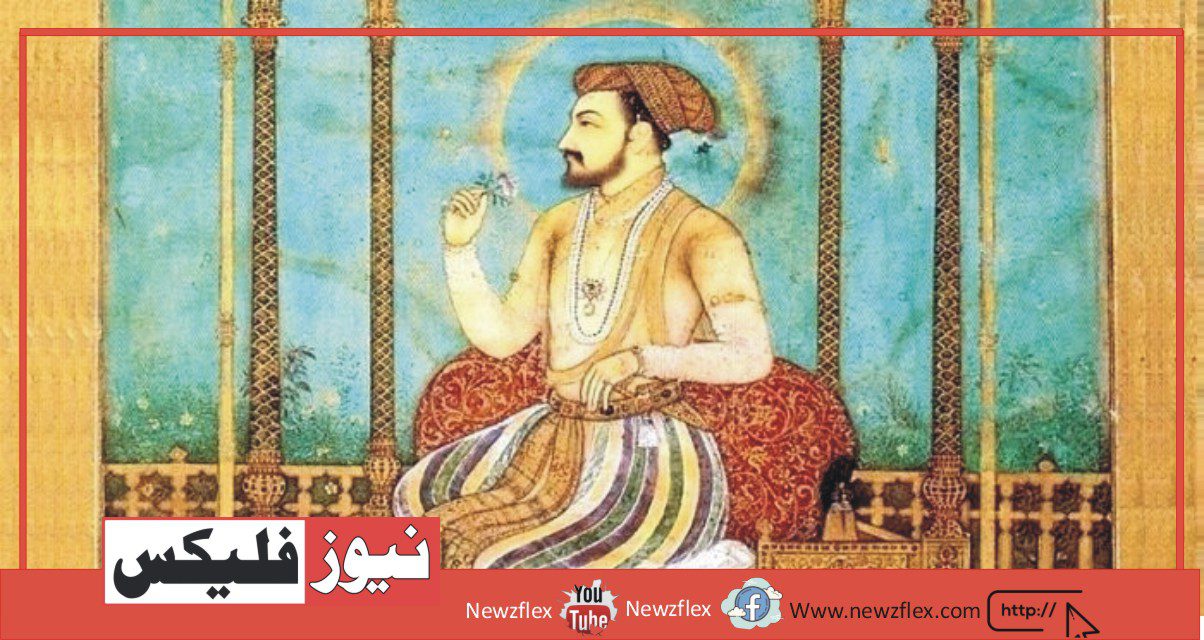
Shah Jehan
Shah Jahan was one of the four sons of Jahangir. His original name was Khurram, born on January 1592, in Lahore to a Hindu mother, the daughter of Raja Udai Singh of Mewar. He was born under the care of Akbar’s childless wife Ruquiah Begum. While very young, he can be acknowledged to be the successor of the Mughal throne after the death of Jahangir.
Prince Khurram was liked by his father. It was on account of his bravery and sense of responsibility that he was held accountable for the many expeditions by his father. Shah Jahan ascended the throne at Agra on 4th February 1628 with the title of Abu_l_Muzaffar Shahab-ud Din Muhammad Sahib Kiran_i-Sani. However, his accession to the throne wasn’t all smooth and he had to meet up with a conflict for succession.
Soon after the death of Jahangir in 1627, Nur Jahan put forward the claims of Shehryar to the throne and proclaimed him as king in Lahore. On the other hand, Asaf Khan (Father-in-law of Shah Jahan ) took up the explanation for Shah Jahan. He sent a message to the Emperor to hurry up to Delhi.
In the meanwhile, Asaf Khan also moved against Shahryar and defeated him in a battle near Lahore. He took him prisoner and blinded him. Thus when Shah Jahan reached Agra, all his political rivals had been eliminated. He ascended the throne of Agra.
Soon after his accession, Shah Jahan had to encounter a lot of disturbance and rebellions. The first such rebellion was led by Jahjar Singh, who started increasing his strength by raising forces, acquiring munitions of war, and strengthening the forts.
Shah Jahan ordered Muhabat Khan to suppress the rebellion. Forces were sent by Shah Jahan from all sides of the country. Hemmed by forces from all sides, Jahjar Singh thought it expedient that he should surrender. He was pardoned on the condition that he should surrender part of his jagir and proceed to serve the Mughal in Deccan.
The rebellion of khan Jahan Lodhi
Another serious challenge to the authority of Shah Jahan was posed by Khan Jahan Lodhi, an able and turbulent officer. Soon after Jahangir’s death, he joined hands with Nur Jahan to advance the claims of Shahryar to the throne. When Shah Jahan ascended the throne, Khan Jahan Lodhi was forced to form a humble submission to Shah Jahan. Shah Jahan pardoned him and allowed him to retain the Governorship of Deccan.
Apart from the rebellions, Shah Jahan had to encounter, at the beginning of his reign a heavy challenge in the shape of great famine. This famine from 1630-32 affected Gujrat, Khandesh, and Deccan and took an important toll on life. Soon, on the heels of famine, followed pestilence which further aggravated the sufferings of the people.
Shah Jahan tried to alleviate the suffering of the people by remitting one-third of the land revenue, State kitchins were opened and food was distributed and freed from charge to the poor and needy.
The Imperial Mughals, particularly, from Akbar to Shah Jahan( 1556_ 1657 )gave an extended era of peace and prosperity to the people of India for a century. During this era, the name and fame of the mighty Mughal monarchs of the best empire in Asia attracted a stream of foreign visitors from everywhere in the world.
They were dazzled by the wealth, magnificence, and grandeur of the Mughal emperors and their nobility.
His period of rule is usually noted because of the Golden Age of Mughal India because of the subsequent reasons;
- The Mughal Empire under Shah Jahan enjoyed maximum peace and order. The country was very little disturbed and he was ready to maintain perfect law and order. The Rajputs were faithful and also the Shia states of the Deccan had accepted the overlordship of the Delhi emperor.
- The extent of Shah Jahan’s empire was, extended from Sindh in the West to Assam in the East and from Afghanistan to Goa in the Deccan.
- Under the rule of Shah Jahan, the Mughal Empire reached its highest pitch of greatness and glory. Since there was peace and prosperity in the country, the provinces brought much revenue. The land was fertile, and therefore the royal income from land revenue alone amounting to 45 crores of rupees annually, had been so great that in any case of his vast expenses, he left a treasure of 24 million in coins, besides gold, silver, and jewels.
- Shah Jahan maintained his ancestral tradition of personally administering justice. He was very strict in punishing the oppressors and dispensing even-handed justice. The grievances of the people were removed and justice was done to all. Thus he was a just ruler.
Shah Jahan’s buildings represent the climax in the evolution of Mughal architecture in the country and it’s especially in the domain of architecture that’s reign properly be called the Golden Age in the history of India. The red fort with its white marble palaces and Jamia Masjid at Delhi, the Moti Masjid, Diwan_i-Khas, Diwan_i_ Am other buildings, the Agra fort and therefore the famous Taj Mahal. As Seeable in the above buildings, Emperor is rightly called the “Prince of Builders”
The spirit of tolerance and also the liberal policy pursued by Akbar under which he convinced the hearts of the Hindus who formed the majority of the population in India, unfortunately, disappeared under Shah Jahan. In the early years of his reign, he issued a royal edict to the effect of dragging down all the newly built temples in his empire and it’s said that in pursuance of this edict, the maximum amount of 72 temples in the province of Allahabad alone was pulled down.
He revived the pilgrim tax on the Hindus and also checked the conversion of Muslims to other faiths, rather he encouraged the conversion of the Hindus to Islam, forbade intermarriages between Hindus and Muslims, and Hindu husbands of Muslim women were forced to embrace Islam.
Thus we see that Shah Jahan signalized his reign by those unwise acts of intolerance which were copied by his sons and which eventually led to the ruin of the empire.
شاہ جہاں
شاہ جہاں جہانگیر کے چار بیٹوں میں سے ایک تھا۔ اس کا اصل نام خرم تھا، جو جنوری 1592 کو لاہور میں میواڑ کے راجہ ادے سنگھ کی بیٹی ہندو ماں کے ہاں پیدا ہوا۔ ان کی پرورش اکبر کی بے اولاد بیوی رقیہ بیگم کی نگرانی میں ہوئی۔ بہت کم عمری میں، وہ جہانگیر کی موت کے بعد مغل تخت کے جانشین بنے۔ شہزادہ خرم کو ان کے والد نے پسند کیا تھا۔ یہ اس کی بہادری اور ذمہ داری کے احساس کی وجہ سے تھا کہ اسے ان کے والد نے بہت سی مہمات کی ذمہ داریاں سونپی تھیں۔
شاہ جہاں 4 فروری 1628ء کو ابوالفضل شہاب الدین محمد صاحب کرن ثانی کے لقب سے آگرہ کے تخت پر بیٹھا۔ تاہم تخت پر اس کا الحاق بالکل ہموار نہیں تھا اور اسے جانشینی کے لیے ایک کشمکش سے گزرنا پڑا۔ 1627 میں جہانگیر کی موت کے فوراً بعد، نورجہاں نے شہریار کے تخت کے دعوے کو آگے بڑھایا اور اسے لاہور کا بادشاہ قرار دیا۔ دوسری طرف، آصف خان (شاہ جہاں کے سسر) نے شاہجہاں کی حمایت کی۔
اس نے شاہجہاں کو پیغام بھیجا کہ جلدی سے دہلی چلے جائیں۔ اسی دوران آصف خان بھی شہریار کے خلاف چلا گیا اور لاہور کے قریب ایک معرکہ میں اسے شکست دی۔ اس کو قیدی بنا کر اندھا کر دیا۔ اس طرح جب شاہ جہاں آگرہ پہنچا تو اس کے تمام سیاسی حریف ختم ہو چکے تھے۔ وہ آگرہ کے تخت پر بیٹھا۔
اس کے الحاق کے فوراً بعد، شاہ جہاں کو بہت سارے خلفشار اور بغاوتوں کا سامنا کرنا پڑا۔ اس طرح کی پہلی بغاوت کی قیادت جہجر سنگھ نے کی، جس نے فوجیں بڑھا کر، جنگی جنگی سازوسامان حاصل کر کے اور قلعوں کو مضبوط کر کے اپنی طاقت بڑھانا شروع کی۔
شاہ جہاں نے محبت خان کو بغاوت کو دبانے کا حکم دیا۔ شاہ جہاں نے ملک کے چاروں طرف سے فوجیں بھیجی تھیں۔ چاروں طرف سے فوجوں کے گھیرے میں آنے کے بعد، جہجر سنگھ نے یہ مناسب سمجھا کہ وہ ہتھیار ڈال دے۔ اسے اس شرط پر معاف کر دیا گیا کہ وہ اپنی جاگیر کا ایک حصہ حوالے کر دے اور دکن میں مغلوں کی خدمت کے لیے آگے بڑھے۔
خان جہاں لودھی کی بغاوت
شاہ جہاں کی اتھارٹی کو ایک اور سنگین چیلنج خان جہاں لودھی نے لاحق تھا جو ایک قابل اور ہنگامہ خیز افسر تھا۔ جہانگیر کی موت کے فوراً بعد، اس نے شہریار کے تخت کے دعوے کو آگے بڑھانے کے لیے نور جہاں سے ہاتھ ملایا۔ جب شاہ جہاں تخت پر بیٹھا تو خان جہان لودھی کو شاہ جہاں کے سامنے عاجزی سے سر تسلیم خم کرنے پر مجبور کیا گیا۔ شاہ جہاں نے اسے معاف کر دیا اور اسے دکن کی گورنری برقرار رکھنے کی اجازت دے دی۔
بغاوتوں کے علاوہ، شاہ جہاں کو اپنے دور حکومت کے آغاز میں سنگین قحط کی شکل میں ایک سنگین چیلنج کا سامنا کرنا پڑا۔ 1630-32 کے اس قحط نے گجرات، خاندیش اور دکن کی زندگیوں کو بہت نقصان پہنچایا۔ جلد ہی، قحط کی ایڑیوں پر، وبائی بیماری نے لوگوں کے مصائب کو مزید بڑھا دیا۔ شاہ جہاں نے زمین کی آمدنی کا ایک تہائی حصہ واپس کر کے لوگوں کی تکالیف کو کم کرنے کی کوشش کی، ریاستی کچن کھولے گئے اور غریبوں اور ضرورت مندوں میں کھانا مفت تقسیم کیا گیا۔
شاہی مغلوں، خاص طور پر اکبر سے لے کر شاہ جہاں (1556_ 1657) نے ہندوستان کے لوگوں کو ایک صدی تک امن اور خوشحالی کا ایک طویل دور دیا۔ اس عرصے کے دوران، ایشیا کی سب سے بڑی سلطنت کے طاقتور مغل بادشاہوں کے نام اور شہرت نے دنیا بھر سے غیر ملکی زائرین کی ایک ندی کو اپنی طرف متوجہ کیا۔ وہ مغل بادشاہوں کی دولت، شان و شوکت اور ان کی شرافت سے حیران تھے۔
ان کی حکمرانی کے دور کو مندرجہ ذیل وجوہات کی بنا پر اکثر مغل ہندوستان کا سنہری دور کہا جاتا ہے۔
نمبر1:شاہ جہاں کے ماتحت مغل سلطنت میں زیادہ سے زیادہ امن و امان تھا۔ ملک بہت کم پریشان تھا اور وہ کامل امن و امان برقرار رکھنے میں کامیاب رہا۔ راجپوت وفادار تھے اور دکن کی شیعہ ریاستوں نے دہلی کے بادشاہ کی بالادستی قبول کر لی تھی۔
نمبر2:شاہ جہاں کی سلطنت کا دائرہ مغرب میں سندھ سے مشرق میں آسام تک اور افغانستان سے لے کر دکن میں گوا تک پھیلا ہوا تھا۔
نمبر3:شاہ جہاں کے دورِ حکومت میں مغلیہ سلطنت اپنی عظمت و جلال کی بلند ترین چوٹی پر پہنچ گئی۔ چونکہ ملک میں امن اور خوشحالی تھی اس لیے صوبوں نے بہت زیادہ ریونیو حاصل کیا۔ زمین زرخیز تھی، اور صرف زمین کی آمدنی سے شاہی آمدنی 45 کروڑ روپے سالانہ تھی، یہ اتنی زیادہ تھی کہ اپنے تمام وسیع اخراجات کے بعد، اس نے سونے، چاندی اور جواہرات کے علاوہ 24 کروڑ کا خزانہ چھوڑا۔
نمبر4:شاہ جہاں نے ذاتی طور پر انصاف کرنے کی اپنی آبائی روایت کو برقرار رکھا۔ وہ ظالموں کو سزا دینے اور انصاف دینے میں بہت سخت تھے۔ عوام کی شکایات دور کی گئیں اور سب کے ساتھ انصاف کیا گیا۔ اس طرح وہ ایک عادل حکمران تھے۔
شاہ جہاں کی عمارتیں ملک میں مغل فن تعمیر کے عروج کی نمائندگی کرتی ہیں اور یہ خاص طور پر فن تعمیر کے اس شعبے میں ہے جس کا دور حکومت ہندوستان کی تاریخ میں سنہری دور کہلاتا ہے۔ سرخ قلعہ جس کے سفید سنگ مرمر کے محلات اور دہلی میں جامع مسجد، موتی مسجد، دیوان_خاص، دیوان_i_ کچھ اور عمارتیں، آگرہ کا قلعہ اور مشہور تاج محل۔ مندرجہ بالا عمارتوں کے پیش نظر شاہ جہاں کو بجا طور پر ’’پرنس آف بلڈرز‘‘ کہا جاتا ہے۔
رواداری کا جذبہ اور لبرل پالیسی جو اکبر نے اپنائی تھی جس کی وجہ سے اس نے ہندوستان میں آبادی کا بڑا حصہ بنانے والے ہندوؤں کے دل جیت لیے تھے، بدقسمتی سے شاہ جہاں کے دور میں غائب ہو گئے۔ اپنے دور حکومت کے ابتدائی سالوں میں اس نے اپنی سلطنت میں تمام نو تعمیر شدہ مندروں کو گرانے کا ایک شاہی حکم جاری کیا اور کہا جاتا ہے کہ اس حکم کی تعمیل میں صرف صوبہ الہ آباد میں 72 مندروں کو گرا دیا گیا۔
اس نے ہندوؤں پر یاتری ٹیکس کو بحال کیا اور مسلمانوں کے دوسرے مذاہب میں تبدیلی کی جانچ پڑتال کی، بلکہ اس نے ہندوؤں کے اسلام قبول کرنے کی حوصلہ افزائی کی، اس نے ہندوؤں اور مسلمانوں کے درمیان شادیوں کو منع کیا اور مسلمان عورتوں کے ہندو شوہروں کو اسلام قبول کرنے پر مجبور کیا گیا۔ اس طرح ہم دیکھتے ہیں کہ شاہ جہاں نے عدم برداشت کے ان غیر دانشمندانہ اقدامات سے اپنے دور حکومت کا اشارہ دیا جو اس کے بیٹوں نے نقل کیے اور جو بالآخر سلطنت کی بربادی کا باعث بنے۔








